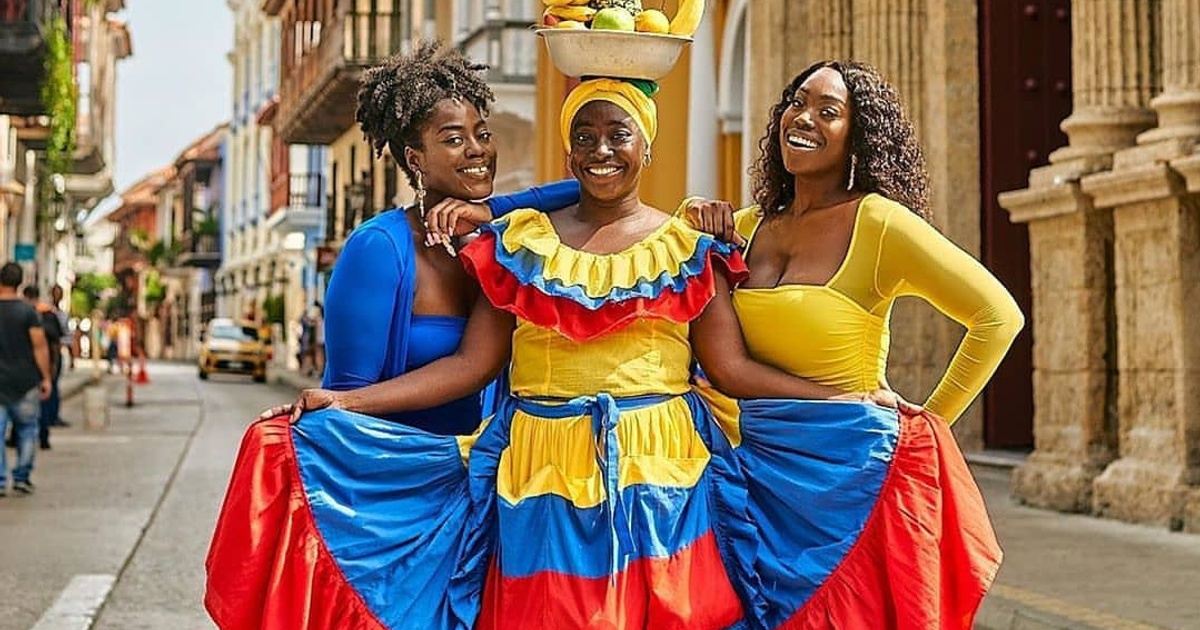The African Diaspora Series: Part 3
The African diaspora in Latin America is vast, diverse, and often underrepresented. While Brazil and the Caribbean receive most global attention, millions of Afro-descended people across Spanish-speaking Latin America have preserved African culture, challenged systemic discrimination, and shaped national identities.
From Colombia to Mexico, this article explores the history, population, and cultural power of Afro-Latinos across the region — highlighting both recognized communities and lesser-known groups fighting for visibility.
Afro-Colombians – ~10.5 million
Colombia has the largest Afro-descended population in Spanish-speaking Latin America — second only to Brazil in the Americas. While the 2018 census recorded 4.6 million self-identifying Afro-Colombians (9.3%), advocacy groups estimate the real number exceeds 10 million.
- Regions: Chocó, Valle del Cauca, Cartagena, Palenque
- Culture: Currulao, Cumbia, marimba traditions
- Milestone: Francia Márquez, elected Colombia’s first Afro-Colombian Vice President in 2022
Afro-Venezuelans – ~3 million
Roughly 10–15% of Venezuela’s population has African heritage. Despite underrepresentation, Afro-Venezuelans continue to preserve African religions, music, and resistance traditions.
- Regions: Barlovento, Miranda, Carabobo
- Culture: San Juan Festival, Afro-Venezuelan drums
- Activism: Local groups demand recognition amid the ongoing national crisis
🇲🇽 Afro-Mexicans – ~2.5 million
Afro-Mexicans were officially recognized in Mexico’s constitution in 2019. The 2020 census reported 2.5 million people (2% of the population) identifying as Afro-descendant.
- Regions: Oaxaca, Guerrero, Veracruz
- Culture: Danza de los Diablos, Son Jarocho
- Progress: Rising visibility and advocacy following centuries of invisibility
🇵🇦 Afro-Panamanians – ~500,000 to 1 million
An estimated 10–15% of Panamanians are of African descent, including descendants of both enslaved Africans and West Indian migrants brought for the Panama Canal.
- Groups: Afro-Colonial and Afro-Antillean
- Culture: Congo traditions, Carnival, Calypso
- Legacy: Major contributions to Panama’s development and national identity
Afro-Ecuadorians – ~1.1 million
Afro-Ecuadorians comprise roughly 7–8% of Ecuador’s population and are concentrated in coastal and highland regions.
- Regions: Esmeraldas, Valle del Chota
- Culture: Bomba music, oral traditions, marimba
- Recognition: Constitutional protections and cultural preservation efforts
Afro-Peruvians – ~800,000
Though they represent only 2–3% of Peru’s population, Afro-Peruvians have had a powerful influence on the nation’s music, cuisine, and spiritual life.
- Regions: Lima, Chincha, Ica
- Culture: Zapateo dance, Cajón percussion
- Progress: National Afro-Peruvian Day recognized on June 4
🌍 Garifuna (Central America) – ~600,000
The Garifuna are a unique Afro-Indigenous diaspora descended from Africans and Arawaks, exiled from the Caribbean and settled in:
- Countries: Honduras, Belize, Guatemala, Nicaragua
- Culture: Garifuna language, punta music, ancestral drumming
- Recognition: UNESCO declared Garifuna culture a Masterpiece of Oral and Intangible Heritage
📝 Footnote: Smaller Afro-descended Communities
Though smaller in size, these communities are fighting for visibility:
- 🇧🇴 Bolivia: ~25,000–30,000 Afro-Bolivians (Yungas region)
- 🇦🇷 Argentina: ~150,000–200,000, largely erased from national history
- 🇨🇱 Chile: No official census data; small but present community near Arica
🔁 Shared Struggles and Rising Voices
Across Latin America, Afro-descended communities face:
- Systemic racism
- Social and political invisibility
- Underrepresentation in leadership and media
But they also lead:
- Cultural revival movements
- Human rights and land justice campaigns
- Pan-African connections across the diaspora
Link to Article 1: What Is a Diaspora? Understanding Global Identity and Who Belongs
Link to Article 2: The African Diaspora: Culture, Impact, and a Vision for the Future
